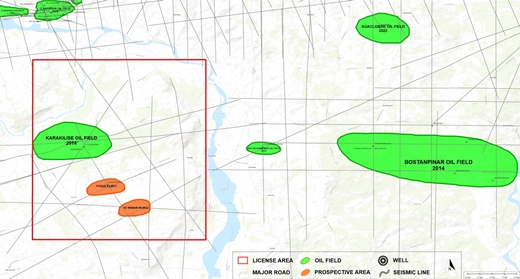Karakilise
section-f4723ef


Karakilise production lease is situated about 30 km North of Diyarbakır. Karakilise-1 exploration well was spudded in June 2003 and drilling operations were completed at a depth of 2,472m in Mardin Group carbonates (Karababa-C) with a 31 API oil discovery. The well was put into production with 380 bopd initial rate in September 2003.
The Mardin Group carbonates are extensively explored as the main reservoir unit in the SE Anatolian Basin. In general, the main target reservoir intervals are the dolomitic wackestones of Karababa-C member of the Karababa Formation and dolomites of the Derdere Formation. Dolomitic reservoirs of the Mardin Group may exceed 20% matrix porosity and 10md permeability. Natural open fractures also increase productivity; however, the degree of fracturing and their orientations are closely related to the regional stress regimes. Overlying Sayındere and Kastel formations form effective seals over Mardin carbonates.
After the oil discovery in Karakilise-1 (2003), Karakilise-2 was drilled as a step-out appraisal well to the same reservoir in November 2004 and completed as a dry hole at 2,525m.
In September 2006, Karakilise-1 was deepened to the Bedinan sandstones (B4) to prove any commercial oil accumulation, but the well had to be completed in the Derdere Formation.
Hakan Yılmaz-1 was drilled to 2,502m, 1.7 km South of Karakilise-1R over a separate Mardin closure. Even though oil-cut drilling mud was recovered from two DSTs (#2 and #3), the well couldn’t be completed for borehole issues and was P&A’d in July 2008.
A new 20km 2D seismic program is planned over Karakilise and Hakan Yılmaz closures to remap the Bedinan and Mardin reservoirs for drilling a new well in 2024.
The Karakilise oil field is in the same trend as the other significant oil fields, i.e., Bostanpınar (2011) 9km to the East and Batı Bostanpınar (2019) 5km to the East. They both produce from the same Mardin Group Derdere Formation with varying API gravities, 30.2 API and 21.3 API respectively.


